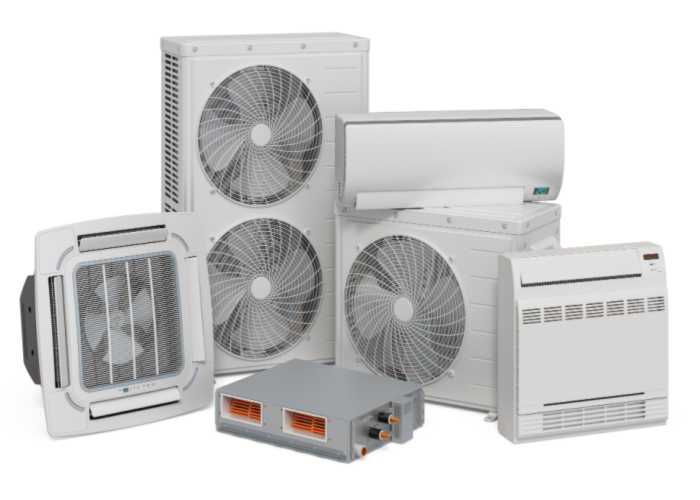Variable refrigerant flow (VRF) is an efficient, versatile type of air conditioning technology. Also known as variable refrigerant volume (VRV), it was first introduced by the Japanese manufacturer Daikin back in 1982.
You'll often hear the terms VRF and VRV used interchangeably. VRV however, is a trademark of Daikin Industries Ltd. Meanwhile, VRF refers to variable systems produced by any other manufacturer.
In this post, we take a closer look at VRF technology, its common applications and its benefits.
Variable is the key word in the acronym VRF. These systems - consisting of an outdoor unit attached to multiple indoor units - are capable of varying refrigerant flow based on the needs of each individual space.
Essentially, they allow you to operate the internal units independently of each other. This is known as zonal control.
Like all modern AC systems, they can both heat and cool a space. Though their full capability depends on the type of system installed:
VRF systems use inverter compressors to vary refrigerant flow. Inverter technology lets the compressor adjust its speed, increasing or decreasing refrigerant flow based on precise temperature needs.
Each indoor unit determines the needed capacity based on the room's current temperature and the desired temperature set by its controls.
This means that, as well as facilitating zonal control, VRF systems ensure only the minimum amount of energy is used to achieve comfortable conditions. In turn, this lowers costs and carbon emissions.
We’ve already mentioned one of the biggest benefits of VRF technology. Its variable capability and precision make it an energy efficient choice. But that’s not the only plus side to these AC systems:

VRF systems are versatile
Not only do they cater to the different heating and cooling needs of a building, you can also use various types of indoor units to suit different spaces.
For example, Wall-mounted units are great for small rooms or offices, while ceiling cassettes are ideal for large open areas.
This versatility makes VRF systems suitable for a wide range of applications.
VRF systems provide custom and consistent comfort
Their precise flow eliminates hot and cold spots and humidity issues. They ensure consistent conditions - whatever the occupancy and primary use of a space.
VRF systems are relatively easy to install
Compared to ducted AC systems, VRF is lightweight, compact and far less intrusive to the fabric of a building. This makes it ideal for retrofitting.
VRF systems are less susceptible to breakdown
Because they are designed to run only as needed, VRF systems are subject to less wear and tear.
That said, you should still invest in planned preventive maintenance to ensure maximum performance and longevity.
So what sort of environments are VRF systems best suited to? The answer is many. Thanks to its incredible adaptability, VRF technology can meet the needs of:
Hotels and hospitality buildings. Zonal control gives guests custom comfort in individual rooms. Meanwhile, on-site facilities like gyms are kept cool, and communal areas like the lobby warm.
Educational sites. VRF can cater to the many different room types found in educational settings. For example, it can meet the different needs of science labs and sports halls.
Healthcare facilities. VRF systems serve the varying needs of spaces like hospital wards, operating theatres and waiting rooms. They also safeguard against cross air contamination between zones.
Office buildings. Whether multiple spaces occupied by different businesses or a building with single occupancy but multiple uses, VRF can be configured to suit.
The list goes on. Exhibition centres, entertainment complexes, health clubs, shopping centres. VRF can be designed to deliver zonal climate control in a vast array of settings.
If you’re looking to learn more about VRF air conditioning, or already have an installation project in mind, Loughborough Air Conditioning can help.
We have over 20 years experience designing custom solutions for clients across the East
Midlands, and our professional accreditations show our commitment to industry leading standards.
